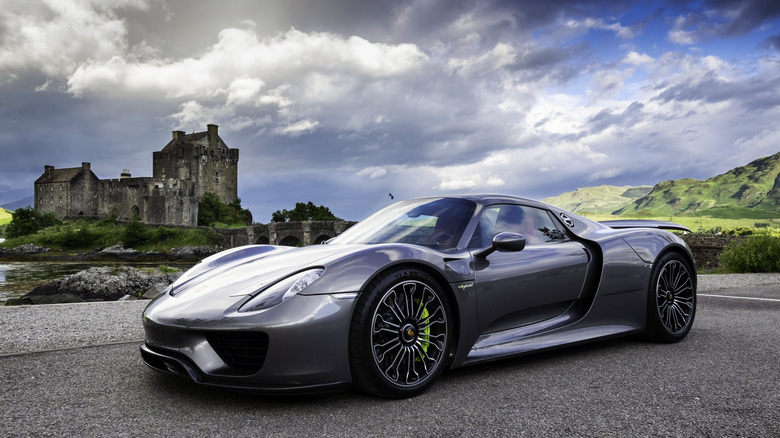
Simonbradfield/Getty Images
The huge automotive greatest hits parade that was the 2000s saw the release of some of the last cars that would be considered a proper, unadulterated treat to the senses for many people. As soon as the 2010s started, a looming force began to grip the car industry, one that would become known as downsizing.
In theory, the downsizing idea is very simple. Instead of using a larger capacity, naturally-aspirated powertrain to achieve performance numbers, automakers resorted to using powertrains with smaller capacities and, often, less cylinders. They would also add some type of forced induction, usually twin-turbos — not just to allow the technically inferior engine to achieve the same or better performance levels than the preceding one, but also to meet those tightening emissions reuglations.
Automotive enthusiasts spent a lot of time lambasting and denouncing downsizing because cars would start to lose their «soul» and «verve» and other similarly descriptive terms. Despite all the backlash, automakers set out to prove to car enthusiasts that smaller, turbocharged engines can really be a good thing after all.
BMW M5 (F10)
The E60 M5 is one of many M5 generations everyone always talks about. They either talk about the insane V10 engine under the hood or the inevitable doom that the rod bearings and 95% of the engine components also face. Love it or hate it, the E60 BMW M5 has earned its icon status, with the V10 being a major contributing factor.
It’s easy to understand, then, why there was an outcry when the F10 M5 came along with a seemingly inferior twin-turbo V8. But this was no ordinary twin-turbo V8. First of all, it put out almost 60 more horsepower than the V10, registering at 560 hp compared to the V10’s 500. That put it on par with the Lamborghini Gallardo at the time.
Secondly, thanks to a fantastic launch control system and improved power, the F10 M5 could still kick it with the V10 car in the sprint to 60 mph. The F10 M5’s V8 also produces one of the most unique engine notes in the car world. All of the engine’s good qualities don’t even touch the main strong suit of the F10 M5: it’s still an M5, and it was, and still is, just as special.
Ford GT (2016)
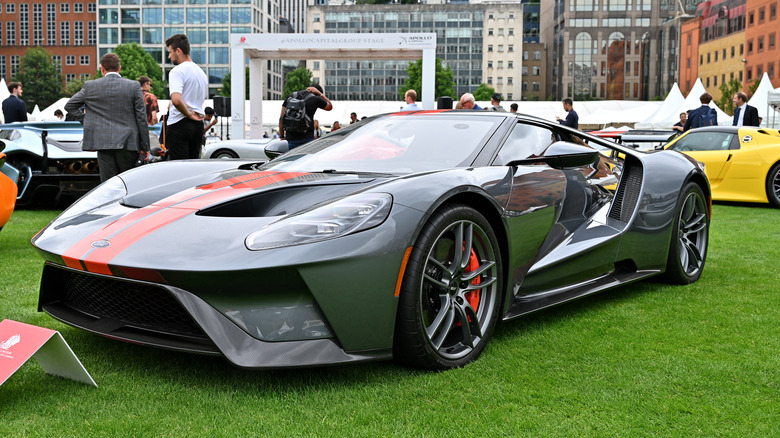
John Keeble/Getty Images
A tale told numerous times by so many, Ford gave Ferrari a taste of its own medicine at LeMans in 1968, with three GT40s securing all three podium positions. In 2003, to celebrate its 100th anniversary, Ford surprised the world with the GT Concept, which would later go into production as the automaker’s first proper supercar since the ’60s original.
Unlike the 2004 model, which was a tribute band, the 2016 Ford GT was the frontman leaving and starting a totally new, clean slate band. Thoroughly modern styling and one of the most ingenious aerodynamic solutions in modern cars, and it was all motivated by… a twin-turbo V6? The outcry from Ford GT fans everywhere was loud and clear, but the 3.5-liter twin-turbo EcoBoost V6 in the new GT put out 660 hp and all the turbo noises.
Thanks to the aerodynamic witchcraft and that incredible powertrain, the Ford GT is a special experience on the track. It can still be used on the road, but no one in their right mind would. With the new GT, Ford proved that even when you stray away from your heritage, you can still produce an all-conquering supercar, even with two less cylinders.
McLaren Artura
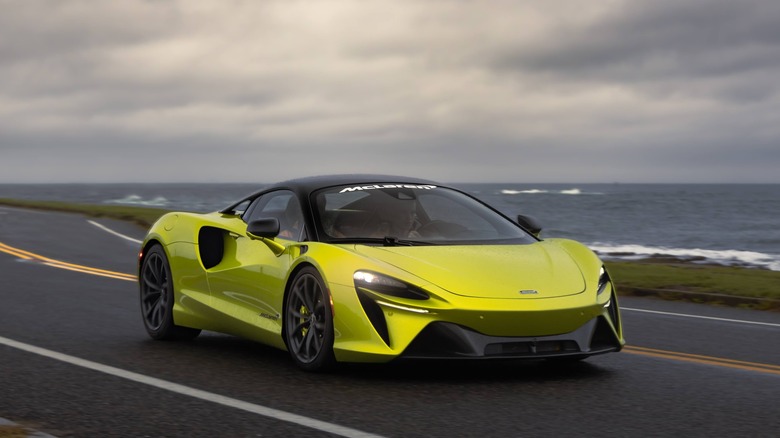
Ethan Yetman/Shutterstock
After the collaborative effort with Mercedes-Benz that gave us the super underrated SLR McLaren, the Woking-based supercar manufacturer would stay dormant in the world of road cars for a while — until the MP4-12C in 2011. That car, along with basically every other McLaren since then, has used some version of the company’s twin-turbo V8. It originally displaced 3.8 liters, but the current one is a 4.0-liter unit.
Even though the V8’s stint is still going, not too long ago, McLaren introduced us to its first-ever V6 engine, as well as the first McLaren vehicle to carry it: the Artura. Along with the Artura losing two cylinders, it gains a hybrid component.
The new V6 features dry sump lubrication and is one of two production V6 engines with a 120-degree bank between the cylinders. It also places the two turbos in a hot-V configuration. Without getting two technical, the 120-degree allows for a shorter crankshaft, which in turn allows the V6 to rev to 8,500 rpm despite being turbocharged, and it can do that without the vibrations getting too out of control. With a total of 690 hp, the Artura still has all the performance and excitement we’ve come to expect from McLaren vehicles.
Ferrari 296 GTB
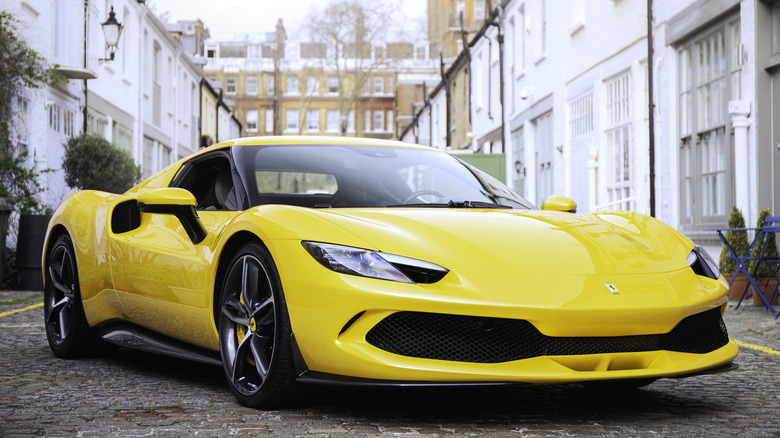
Martyn Lucy/Getty Images
Occupying the opposite corner of the ring, the new Ferrari 296 GTB has a lot in common with the McLaren Artura. Firstly, it’s the first V6-powered Ferrari since the original Dino of the 1960s, and it’s also the first V6-powered prancing horse in a long line of mid-mounted V8 legends. The 296 GTB is the effective replacement for the F8, and on paper, there’s a lot to get excited about.
As mentioned, gone is the screaming flat-plane crank V8 from previous mid-engine Ferraris, and in its place comes a brand new 3.0-liter V6, dubbed the F163. Not only does it have the same capacity as the Artura’s V6, but both engines also use the novel 120-degree cylinder angle, bringing along the same benefits.
The main difference between the Brit and the Italian is that the Italian has more power. A lot more power. The engine itself is more powerful, but the hybrid component, another commonality between the two, is also stronger. While the Artura has to make do with 690 hp, the 296 GTB puts out a menacing 819 hp all in. That means, then, that comparing the two isn’t really all that fair despite their similarities. Still, a plug-in hybrid V6 mid-engine Ferrari is a very exciting prospect.
Toyota GR Corolla
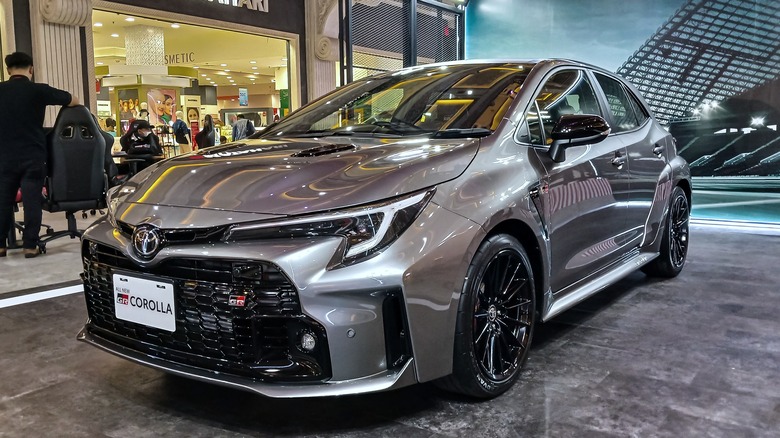
Rakhmat Darmawan/Shutterstock
Remember when everyone used to call Toyota the boring commuter car manufacturer that never really knew how to have some fun? In recent years, Toyota has been showing that it really, genuinely took offense to all of those comments, as it keeps knocking out more and more super exciting performance cars. Undoubtedly, one of the most exciting of those is the GR Corolla.
This is North America’s consolation prize for being left without the GR Yaris. On paper, the GR Corolla’s formula is basically identical, albeit it’s in a slightly larger package. Under the hood sits a 1.6-liter turbo three pot. Historically, we’ve all been conditioned to think that nothing else except a turbo four banger (and the occasional V6) earns the right of passage under the hood of a hot hatchback and that three pots belong in small European city cars.
But with 300 hp on tap, the GR Corolla totally knocks down this preconception. Thanks to this incredible power output, the GR Corolla’s I3 has one of the highest specific outputs (horsepower per liter) of any engine in history, and its power is harnessed thanks to a trick AWD system and a mandatory six-speed manual transmission. Toyota’s character arc of transforming from boring to extremely exciting automaker is definitely a solid one, and the GR Corolla is proof of that.
Volkswagen Golf R
Volkswagen revolutionized the idea of a larger capacity engine in a vehicle with a transverse engine layout with the VR6. Eventually, they decided to leverage the VR6 for the creation of a more powerful Golf derivative, which became known as the Golf R32. The original R32, based on the Mk4 Golf, put out 240 hp, while the succeeding Mk5 put out 250 hp.
Unfortunately, the VR6 powered Golf disappeared about as quickly as it came. The Golf R would return for the sixth generation Golf in 2010, but for the first time, the VR6 was nowhere to be seen, instead replaced by a 2.0-liter turbo four-cylinder, similar to what the Golf GTI used at the time.
Power went up to 262 hp in the Mk6, which would slowly rise with every upcoming generation, reaching 316 hp in the most recent Mk8. Thanks to the AWD system and the constantly improving drivetrain components, the current Golf R can outaccelerate not just modern sports cars, but also stuff we used to call supercars just 15 years ago, and even GT cars with twice or even three times the cylinders.
RAM 1500 RHO
The Hellcat V8: One of the most technically impressive, but also one of the most awesome V8 engines we’ve seen in the past 20 years. With 6.2 liters and a massive supercharger on top, the Hellcat V8 put out anywhere from 707 hp to numbers besting the Bugatti Veyron. You know, the one that was once the fastest car in the world? That one.
Since its first arrival for model year 2015, the Hellcat has somehow snuck its way into basically every Chrysler vehicle, and that includes the RAM 1500, which would become the RAM TRX. Sadly, with the retirement of the Hellcat V8, and the HEMI V8 as a whole, the RAM TRX has left along with it.
RAM’s consolation prize comes in the form of the 1500 RHO. Based on the facelifted 2025 RAM 1500, the RHO retains all the fancy off-roading hardware of the TRX, like the factory-fit 35″ tires, beefy Bilstein shocks, and the all-important-for-offroading Dana rear axle, but swaps out the Hellcat V8 for the all new, and super promising twin-turbo Hurricane six-cylinder with a not-inconsiderable 540 hp.
Bentley Continental GT V8 (GT S)
After a turbulent 20th century, Bentley was acquired by the VW Group, and the first order of business was giving the historic automaker a proper, no-holds-barred grand tourer. This required engineering a whole new platform, and a whole new, never-before-seen powertrain. VW was no stranger to narrow-angle engines, and for the Continental GT, that meant the world’s first W12.
The W12 was the de facto powertrain offered on the Continental until very recently, but a decade ago, Continental GT buyers were given the option of a V8. The 4.0-liter twin-turbo unit was smaller and lighter than the W12, and it had a little less power, offering up to 500 hp and going up to 542 hp on the most recent Continental GT S. With the smaller weight on the front axle, the Continental GT V8 encouraged the driver to open the taps just a little bit more.
Eventually, the GT V8 would become a smash hit, and it remained available on the Continental GT even well into the model’s third generation. Sadly, with the arrival of the new hybrid V6 Continental GT looming, the days of the more fun-loving but incredibly capable Continental GT V8 are also numbered.
Ford F-150 Raptor
Ford took a pretty major gamble in the early 2010s by doing something with the F-150 that no one else had really tried before. It tried the street truck concept with the original Lightning, and it even dabbled with the motorcycle-themed Harley Davidson. In 2010, Ford gave the world the first factory off-road pickup truck, the F-150 Raptor.
The first-gen Raptor, one of the last vehicles to carry the SVT moniker, offered a 5.4-liter V8 or a much more muscular 6.2-liter V8. However, when the second generation Raptor came around, based on the thirteenth gen F-150, things changed. The do-it-all 3.5-liter twin-turbo EcoBoost V6 replaced the two Modular V8s from the generation prior.
Enthusiasts were skeptical, although their fears quickly subsided, as the V6-powered F-150 Raptor was more powerful than the V8 and a fair bit more capable, thanks to improved off-roading hardware. Not to mention, it was also much better on fuel than the V8-powered versions. The latest one takes it many, many steps further.
Porsche 918 Spyder
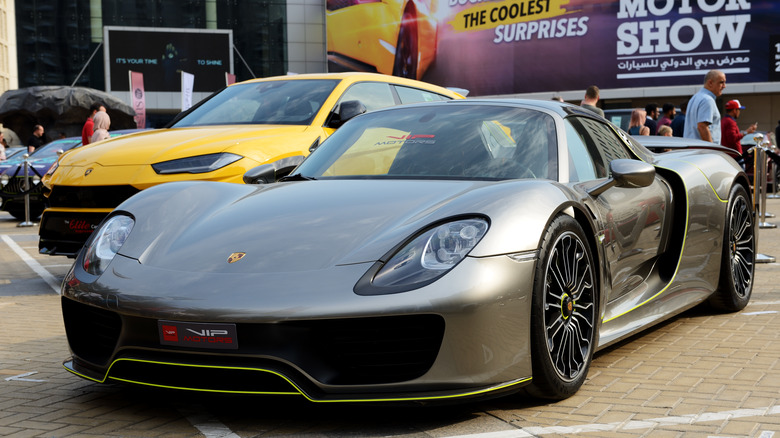
Slava296/Getty Images
While the 911 is definitely the most ubiquitous of Porsches, it’s easy to forget that to this day, Porsche has only made three vehicles that can genuinely classify as supercars. The 959, released in 1986, was a roided up 911 with AWD and an off-road crawling gear. Then, in 2004, there was the Carrera GT, often cited as the last analog supercar, powered by a screaming 5.7-liter V10 with roots in motorsport.
Naturally, the Carrera GT’s successor had some pretty big shoes to fill, but the 918 Spyder didn’t just fill them; it overfilled them. Unfortunately, one major sacrifice had to be made: the Carrera GT’s V10 was nowhere to be found, instead replaced by a bespoke 4.6-liter naturally-aspirated V8 with a flat-plane crankshaft.
This was still a high-revving naturally-aspirated V8, so the downsizing wasn’t all that big, but still, some of that auditory drama disappeared with the deletion of those two cylinders. However, the 918 Spyder’s hybrid component filled in those gaps, and anyway, the V8 by itself was actually more powerful than the Carrera GT’s V10. With the hybrid component and the engine in full swing, the 918 Spyder put out a stonking 887 hp, which allowed it to reach 60 mph in just 2.6 seconds.